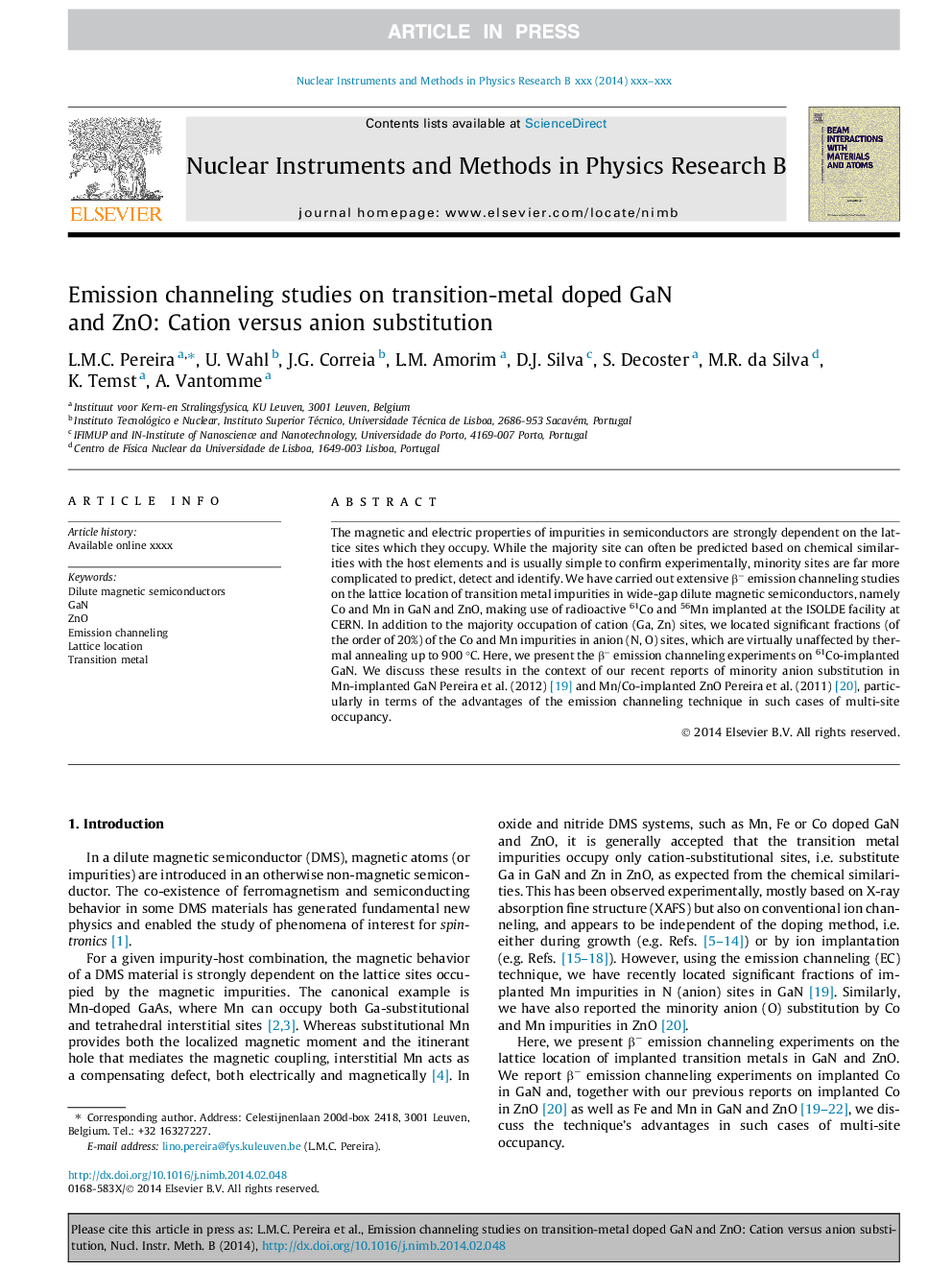| Article ID | Journal | Published Year | Pages | File Type |
|---|---|---|---|---|
| 8041434 | Nuclear Instruments and Methods in Physics Research Section B: Beam Interactions with Materials and Atoms | 2014 | 5 Pages |
Abstract
The magnetic and electric properties of impurities in semiconductors are strongly dependent on the lattice sites which they occupy. While the majority site can often be predicted based on chemical similarities with the host elements and is usually simple to confirm experimentally, minority sites are far more complicated to predict, detect and identify. We have carried out extensive βâ emission channeling studies on the lattice location of transition metal impurities in wide-gap dilute magnetic semiconductors, namely Co and Mn in GaN and ZnO, making use of radioactive 61Co and 56Mn implanted at the ISOLDE facility at CERN. In addition to the majority occupation of cation (Ga, Zn) sites, we located significant fractions (of the order of 20%) of the Co and Mn impurities in anion (N, O) sites, which are virtually unaffected by thermal annealing up to 900 °C. Here, we present the βâ emission channeling experiments on 61Co-implanted GaN. We discuss these results in the context of our recent reports of minority anion substitution in Mn-implanted GaN Pereira et al. (2012) [19] and Mn/Co-implanted ZnO Pereira et al. (2011) [20], particularly in terms of the advantages of the emission channeling technique in such cases of multi-site occupancy.
Related Topics
Physical Sciences and Engineering
Materials Science
Surfaces, Coatings and Films
Authors
L.M.C. Pereira, U. Wahl, J.G. Correia, L.M. Amorim, D.J. Silva, S. Decoster, M.R. da Silva, K. Temst, A. Vantomme,
